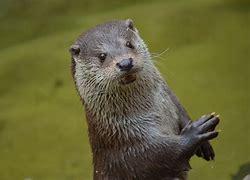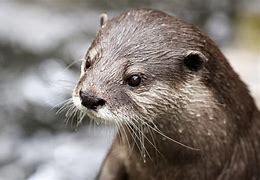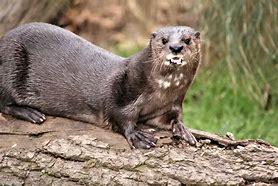Results: Playful as an Otter, part two
Published on 09/28/2022
All types of otters have fully or partially webbed paws that help them paddle and strong tails that they use to push themselves through the water. They can be anywhere between 2-6 feet in length, with large variation across species. These magnificent mammals have strong jaws and claws that help them hunt fish, crustaceans, amphibians, and mollusks. https://wildlifetrip.org/different-types-of-otters/ is the source for this survey.

QUESTIONS
GO to COMMENTS
Comments
1.
1.
Eurasian otters have the widest geographical distribution of all the otter species. They are found across Europe, Asia, and even Africa. They live in rivers, swamps, marshlands, lakes, streams, and coastal areas. They use the rich vegetation around their wet habitats to hide from predators and to make safe dens where they can sleep and rear their young safely. Eurasian otters have brown, furry bodies with a gray tint and a lighter, almost cream-colored belly. Their thick muscular tails help them propel themselves through the water and steer as they swim. Eurasian otters mainly feed on fish, but also snack on small mammals, birds, crustaceans, and aquatic insects. Are you familiar with Eurasian otters?

Yes
12%
269 votes
No
75%
1727 votes
Not Applicable
13%
304 votes
2.
2.
Hairy-nosed otters are one of the rarest otter species on Earth. This solitary mammal is found in Southeast Asia, in countries like Cambodia, Malaysia, Thailand, Laos, and Indonesia. The tip of the otter's snout is covered in short hairs, giving the animal its comical name. They have short brown fur that is lighter on the animal's belly. Another telling feature of this species is their white chins and beards. A hairy-nosed otter usually weighs 12-18 pounds and is 23-32 inches long. They are thought to live for up to 10 years in the wild. These otters set up their homes in coastal areas or by large inland rivers. They are active during the day when they hunt for fish, crustaceans, mollusks, and water snakes. Their webbed paws are perfect for their semi-aquatic lifestyle. They have sharp claws that help them catch, kill, and tear up their prey. Were you aware of hairy-nosed otters?

Yes
11%
260 votes
No
75%
1735 votes
Not Applicable
13%
305 votes
3.
3.
Spotted-necked otters get their name from the brown and white spots on their chins and underside. The rest of their slender body is covered in a reddish brown or light brown fur. They are native to central Africa. These curious little mammals are abundant at Lake Victoria and Lake Tanganyika, as well as some wet areas of sub-Saharan Africa. They aren't fussy when choosing between lakes, rivers, streams, or swamps, but they are heavily aquatic and spend nearly all of their time in the water. Female spotted-necked otters are shorter than males and have lighter colored fur. They are 34-42 inches long and weigh up to 13 pounds. They hunt for fish and other aquatic animals during the day and sleep at night. Have you heard about spotted-neck otters before?

Yes
8%
195 votes
No
78%
1797 votes
Not Applicable
13%
308 votes
COMMENTS


